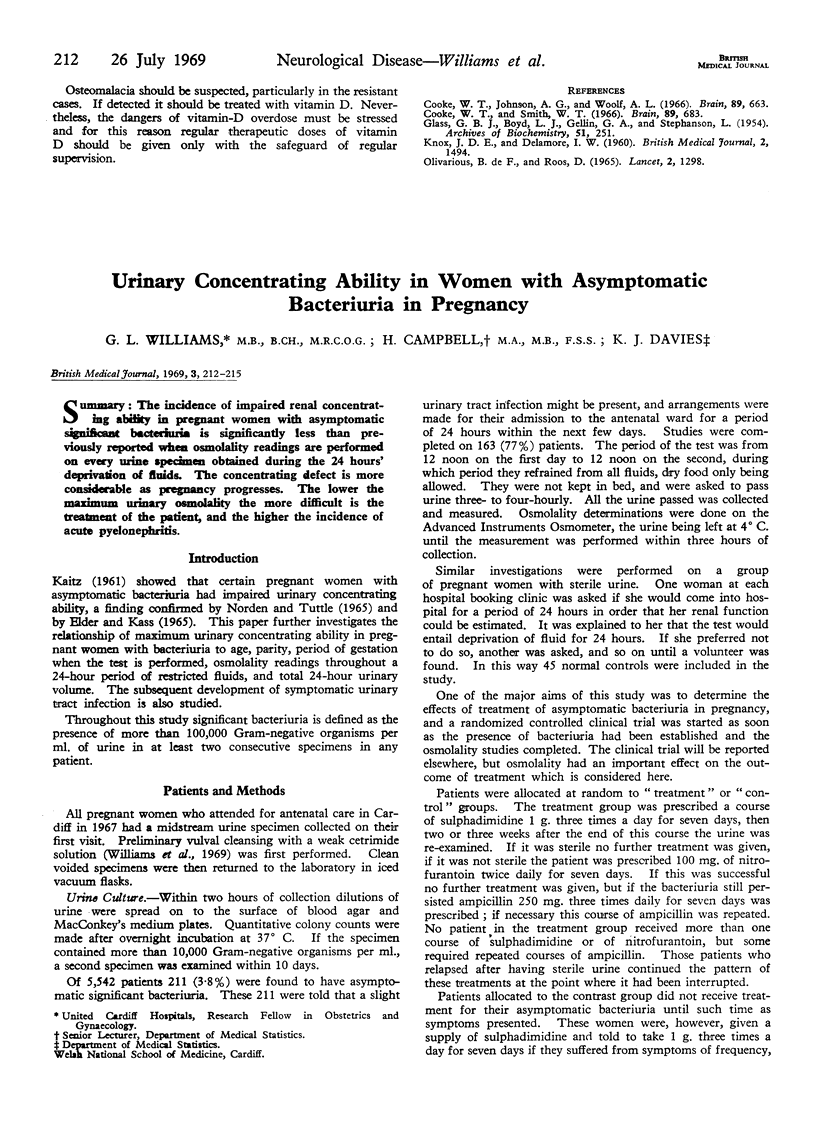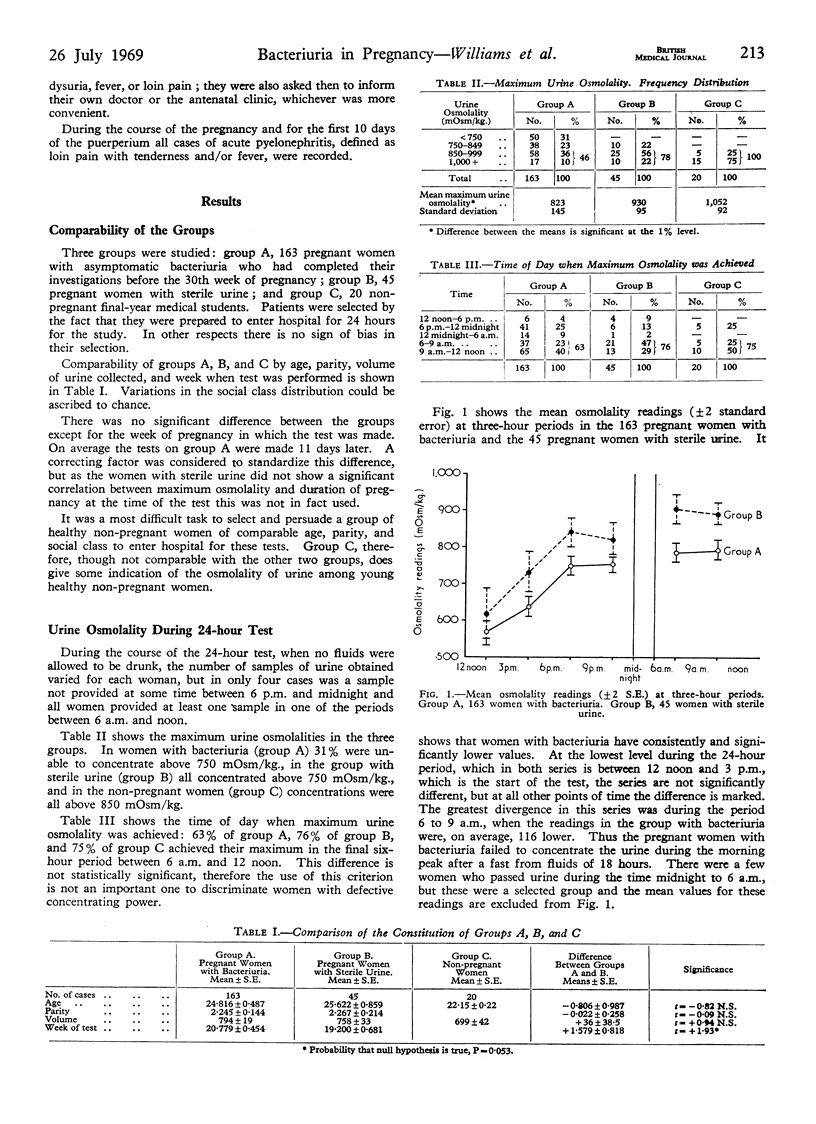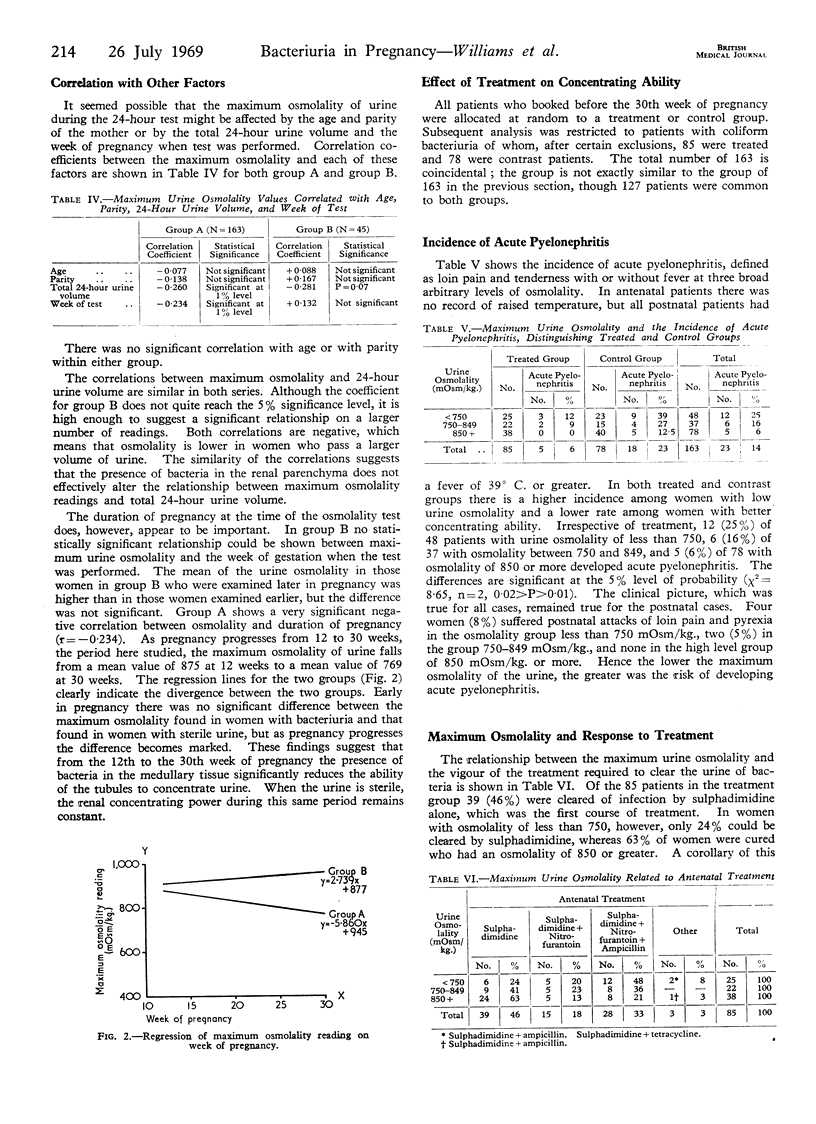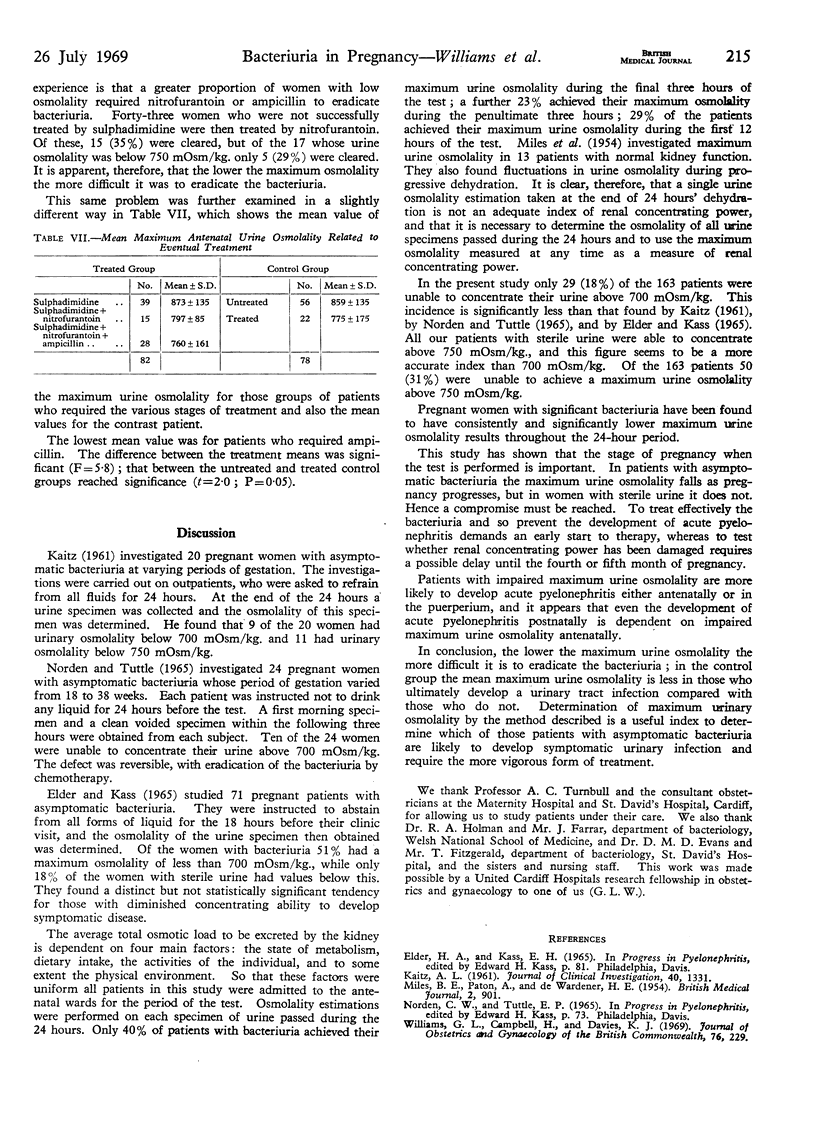Abstract
The incidence of impaired renal concentrating ability in pregnant women with asymptomatic significant bacteriuria is significantly less than previously reported when osmolality readings are performed on every urine specimen obtained during the 24 hours' deprivation of fluids. The concentrating defect is more considerable as pregnancy progresses. The lower the maximum urinary osmolality the more difficult is the treatment of the patient, and the higher the incidence of acute pyelonephritis.
Full text
PDF



Selected References
These references are in PubMed. This may not be the complete list of references from this article.
- KAITZ A. L. Urinary concentrating ability in pregnant women with asymptomatic bacteriuria. J Clin Invest. 1961 Jul;40:1331–1338. doi: 10.1172/JCI104363. [DOI] [PMC free article] [PubMed] [Google Scholar]
- MILES B. E., PATON A., DE WARDENER H. E. Maximum urine concentration. Br Med J. 1954 Oct 16;2(4893):901–905. doi: 10.1136/bmj.2.4893.901. [DOI] [PMC free article] [PubMed] [Google Scholar]
- Williams G. L., Campbell H., Davies K. J. The influence of age, parity and social class on the incidence of asymptomatic bacteriuria in pregnancy. J Obstet Gynaecol Br Commonw. 1969 Mar;76(3):229–239. doi: 10.1111/j.1471-0528.1969.tb05826.x. [DOI] [PubMed] [Google Scholar]


